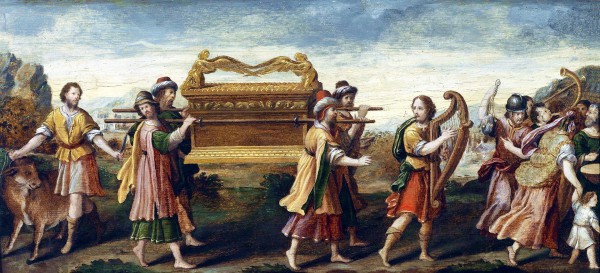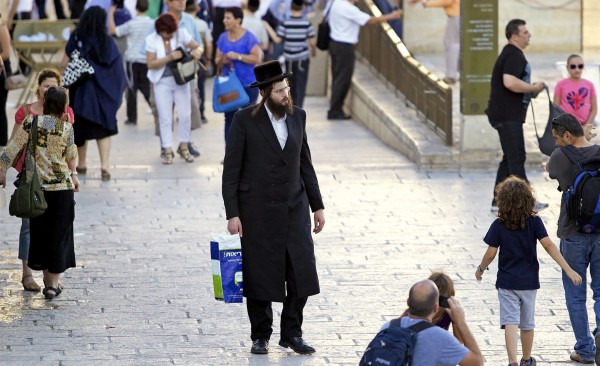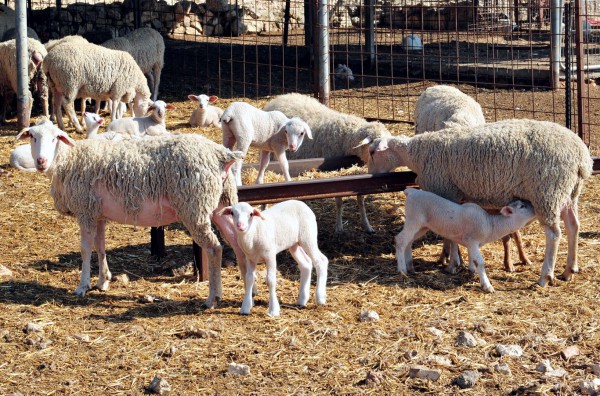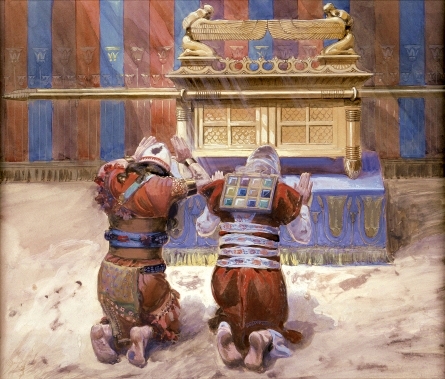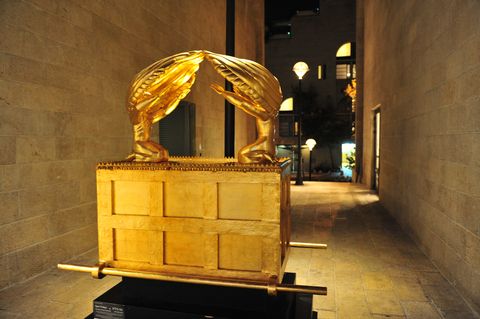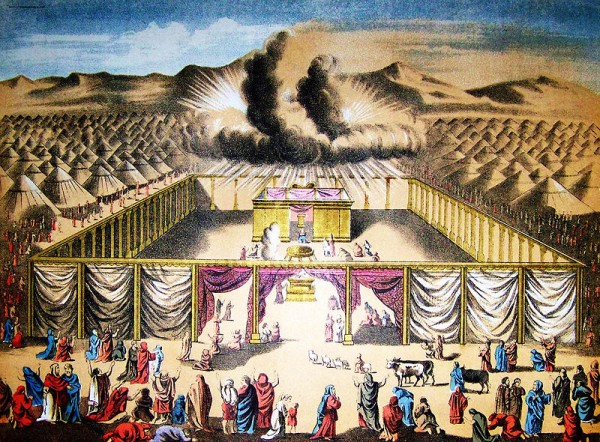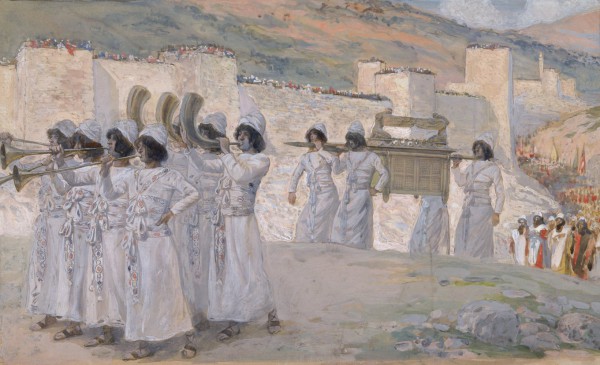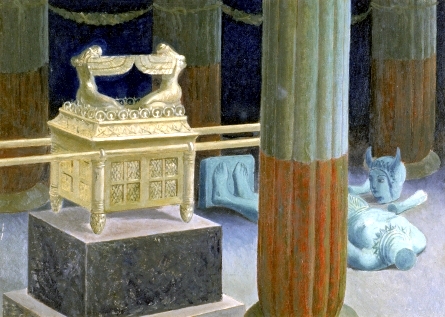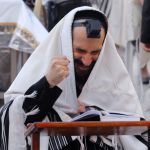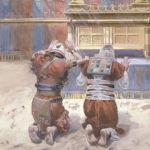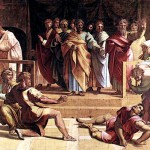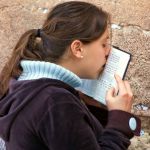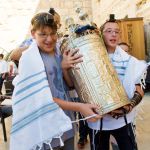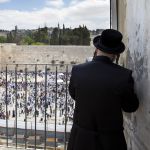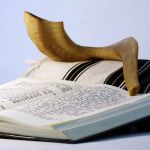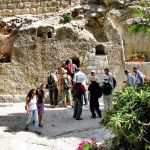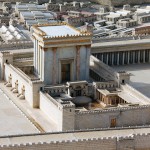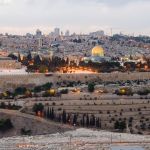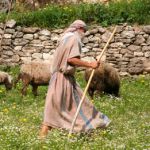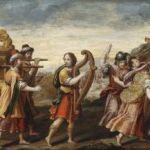“There I will meet with you; and from above the mercy seat, from between the two cherubim which are upon the Ark of the Testimony, I will speak to you about all that I will give you in commandment for the sons of Israel.” (Exodus 25:22)
As Believers, we all long to have that closeness to God, to be in His very Presence, in the Holy of Holies.
This longing is well expressed by songwriter Dave Browning in his popular song called “Holy of Holies”:
Take me past the outer courts
Into the Holy Place
Past the brazen altar
Lord, I want to see Your face
(Lyrics excerpted from “Holy of Holies” Copyright: Dayspring Music, LLC)
Coming Before the Divine Presence of God at the Mercy Seat
In the Torah, we see that only the Cohen HaGadol (High Priest) had access once a year on Yom Kippur (Day of Atonement) to the very Presence of God in the Kodesh HaKodeshim (Holy of Holies), which was the heart of the Mishkan (Tabernacle) and later the Beit HaMikdash (Temple).
To enter in, the Cohen HaGadol would go through the Parokhet (פרוכת / veil or curtain) that separated this holiest of places from the rest of the Temple. The word “parokhet” is derived from the root perek (פרך) which can mean to break apart or to fracture, but also rigor and severity.
We can understand from this that the veil represented the separation between God and man due to man’s sin, which originated in the fall of Adam and Eve in the Garden of Eden. (Genesis 3; Leviticus 16:30)
At the instituting of the Brit Chadashah (New Covenant), the veil was torn and greater access was opened, as it states in Hebrews:
Therefore, brothers and sisters, since we have confidence to enter the Most Holy Place by the blood of Yeshua (Jesus), by a new and living way opened for us through the curtain, that is, His body, and since we have a great priest over the house of God, let us draw near to God with a sincere heart and with the full assurance that faith brings. (Hebrews 10:19–22)
We notice here in these verses, that the veil represented Yeshua, and that when He died on the Roman execution stake for sin, which separates us from God, the veil was torn.
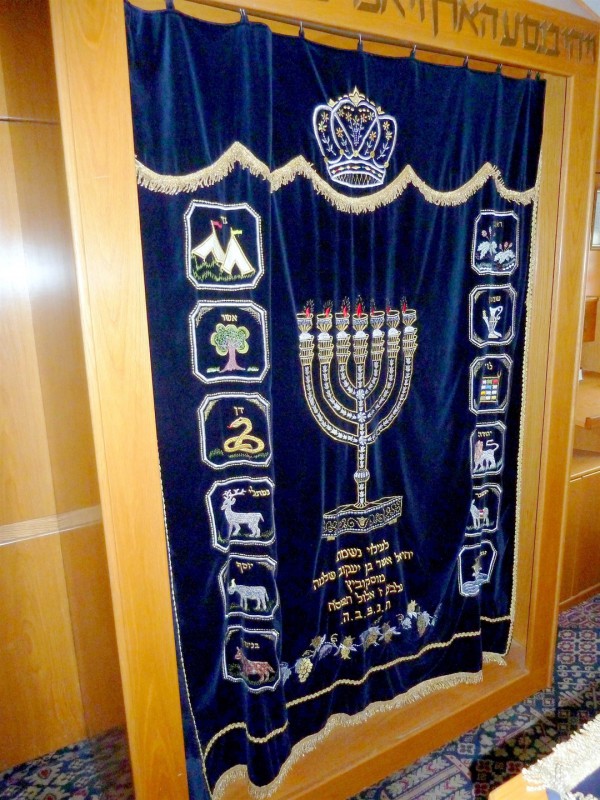
The parokhet that today covers the Torah Ark represents the Parokhet that once hung at the entrance to the Holy of Holies where the Ark of the Covenant was held. This parokhet above is embroidered with symbols of the Tribes of Israel and with the Menorah.
In John 16:7, Yeshua told His talmidim (disciples), “I tell you the truth, it is to your advantage that I go away; for if I do not go away, the Helper will not come to you; but if I go, I will send Him to you.”
When Yeshua spoke these words to His disciples, they had already begun to mourn His going away to be with the Father.
Because of the sacrifice that God’s Son made for us, we now have direct access to the Father through the Ruach HaKodesh (Holy Spirit)—that same Spirit that once dwelled solely on the Mercy Seat in the ancient Temple. For this alone, we should rejoice daily.
Before the Brit Chadashah, the Divine Spirit might be assigned to dwell in an individual if God willed it. For example, Exodus 31:1–11 describes Lord God placing His Spirit (in Hebrew, Ruach Elohim) in craftsmen such as Bezalel in order to build the holy Tabernacle.
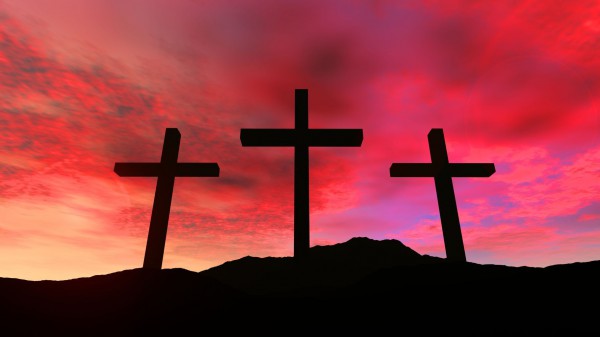
“For we believe that Yeshua died and rose again, and so we believe that God will bring with Yeshua those who have fallen asleep in Him.” (1 Thessalonians 4:14)
The Bible also describes His Spirit as endowing the craftsmen with intelligence and knowledge as well as ability in all kinds of craftsmanship, telling us that this indwelling of the Spirit of God was granted for a very special purpose.
Psalm 51:11 reveals that God had granted His Spirit to David, who laments, “Take not Your holy Spirit from me.” In this case, it is possible that God had given David a special anointing to enable him to rule. Because he sinned by killing Uriah, Bathsheba’s husband, he was in danger of losing it.
Because of Yeshua, we have this Divine Presence with us, and we need only ask to receive it.
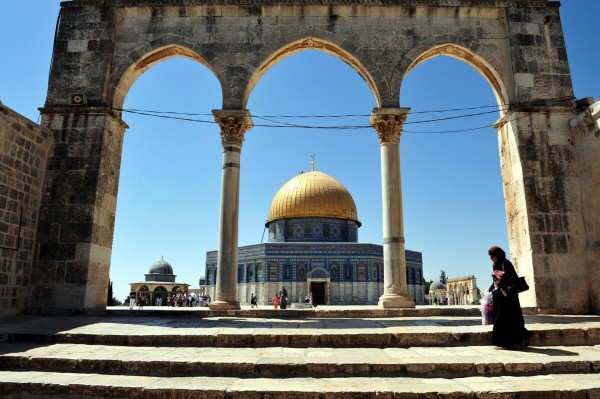
The Golden Dome of the Rock was built to occupy the spot where the Holy of Holies once was situated.
What Is This Mercy Seat?
“You shall make a mercy seat [kapporet] of pure gold, two and a half cubits long and one and a half cubits wide. You shall make two cherubim of gold, make them of hammered work at the two ends of the mercy seat.” (Exodus 25:17–18)
The English term Mercy Seat is not a literal translation for the name that describes the place on which the golden angels’ wings touched and from where God would speak. This term comes from Martin Luther’s translation of the Bible.
The Hebrew word is Kapporet (כפורת), and the Complete Jewish Bible simply translates it as ark cover.
Kapporet is likely derived from kaphar, meaning cover. Indeed, it was the solid gold cover over the Aron HaBrit (Ark of the Covenant) that sat in the Holy of Holies in the Mishkan (Tabernacle).
Kaphar also means to purge, make atonement, or make reconciliation. With different vowel sounds, the same letters that make kaphar is pronounced kopher, which means the price of a life or a ransom.
Kapporet is also related to the word kippur (as in Yom Kippur), which is translated as purge, atone, expiate, and propitiate.
The Kapporet, therefore, is translated in some Bibles as the atonement cover and it is, indeed, connected to atonement, mercy, and restoration.
The Mercy Seat rested on or covered the Aron HaBrit, or box containing the Testimony (Exodus 25:21): “…and into the ark you shall put the Testimony [עֵדוּת edute] which I shall give you.”
The word testimony or edute refers both to the Ten Commandments and the Code of the Law in general. Of course, the Ark did house the two tablets of stone, which represent the entire law.
This Mercy Seat on the Ark of the Covenant was made of solid gold (Exodus 37:6), as were the keruvim (cherubim) situated at each end. The two cherubs were situated opposite to one another, and their wings, which wrapped around their bodies, touched between them.
The Ark of the Covenant was made of acacia wood overlaid with gold inside and out.
We read in the Book of Numbers that at the completion of the dedication of the Tabernacle, the Voice of God spoke to Moses from between the cherubim.
“When Moses entered the tent of meeting to speak with the LORD, he heard the voice speaking to him from between the two cherubim above the atonement cover on the ark of the covenant law. In this way the LORD spoke to him.” (Numbers 7:89)
The Divine Presence of God or Shekhinah rested between the cherubim on the Kapporet above the precepts of the law.
It also rested above this Mercy Seat in a cloud that covered the Tabernacle, which is called the “cloud of the Lord.”
Likewise, we read in Scripture that God would appear in the cloud upon the Kapporet between the two cherubim and, at that time, the priests were not to enter into the tabernacle.
“The LORD said to Moses: ‘Tell your brother Aaron that he shall not enter at any time into the holy place inside the veil, before the mercy seat which is on the ark, or he will die; for I will appear in the cloud over the mercy seat.’” (Leviticus 16:2)
The Kapporet played an important role in the Yom Kippur (Day of Atonement) ceremony. The Cohen HaGadol (High Priest) was instructed to enter the Kodesh HaKodesh to offer the blood of sacrifice and incense at the Kapporet.
On this holiest of days, the Cohen HaGadol would enter through the veil but not without blood.
So while the Kapporet represented the relationship we are supposed to have with our Creator, it also represents the means of salvation from sin—the violation of the Torah contained in the Ark—through the sprinkling of the blood of atonement at the Mercy Seat.
The cherubim above the Ark have been interpreted by the mystical Rabbi Nachmanides (Rabbi Moshe ben Nachman, 1194–1270) as a manifestation of the “hidden wisdom” emanating from the Torah within the Ark. He believed they had the faces of children, a boy and a girl.
The prophet Ezekiel also saw in a vision of cherubim that they had four faces, one of a cherub, one human, one of a lion and one of an oxen (Ezekiel 10:4).
While Nachmanides links the Divine Presence to the whole Torah, another great Rabbi and commentator of the Talmud (the compendium of rabbinical interpretations of the Torah, the five books of Moses), Rashi (Rabbi Shlomo Yitzchaki, 1040–1105), links the Divine Presence to the cherubim themselves.
He argues that God loves the Jew not for his wisdom or piety, but for his childlikeness. He loves us as children since He is our Father. (chabadtalk)
“Yeshua said, ‘Let the little children come to me, and do not hinder them, for the kingdom of heaven belongs to such as these.'” (Matthew 19:14)
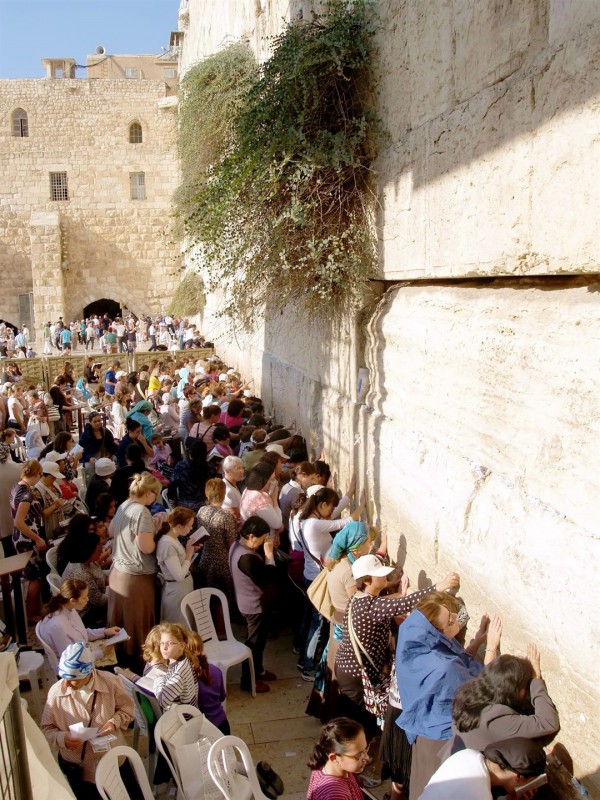
Jewish women pray at the Western (Wailing) Wall in Jerusalem. The Wall was part of the retaining structure that supported the Temple Mount. Of the four walls, the Western Wall is thought to be the closest to the spot where the Temple was located. While the Temple Mount is Judaism’s holiest site, the Western Wall is Judaism’s second, deriving its holiness from the Mount itself.
The Importance of the Ark of the Covenant
As a rule, the Jewish People do not venerate objects, preferring to focus on actions and beliefs.
The story of Abraham—the father of Judaism—destroying his father’s idols is well known throughout Judaism. As well, the Golden Calf worshiped by the Hebrews at Mount Sinai is considered a throwback to the bondage of their Egyptian pagan past.
The Torah clearly condemns the worship of graven images, and Jews do not venerate holy relics or manmade objects. This is taken so seriously that when television was first introduced in Israel, it was common to see news footage of ultra-Orthodox Jews covering their faces when confronted by a TV news crew, not wanting their faces to become “images.”
This practice eventually passed. Haredi ultra-Orthodox men no longer cover their face when confronted by a camera lens, although they do try to avoid them.
The Ark of the Covenant is probably the only exception to this rule not to venerate objects because its cover, the Kapporet, served as the manifestation of God’s physical Presence on earth.
The Ark was central to the life of the Children of Israel as they wandered through the desert. God used it as a kind of GPS hovering over the Ark in a cloud of smoke during the day and a column of fire by night to direct the path of the Tribes of Israel.
When it was time to move, the cloud would lift from the Tabernacle and begin its advance.
According to Rashi’s commentary, the Ark was carried 2000 cubits ahead of the nation (Num. R. 2:9). A midrash (rabbinic teaching) explains that it cleared a path “by burning snakes, scorpions, and thorns with two jets of flame that shot from its underside (T. VaYakhel, 7).” (Jerry A. Grunor, Let My People Go, p. viii)
Another midrash explains that those who carried the Ark were actually suspended several inches above the ground (Sotah 35a).
As well, the Ark always accompanied the Israelites in their battles. (Jewish Virtual Library)
When the Israelites crossed the Jordan (whose waters split as the Ark was carried over) into Canaan, they bore the Ark around the walls of Jericho. The walls then fell when the trumpets were sounded, and Jericho was absolutely defeated. (Joshua 6)
Eventually, the Tabernacle with the Ark was set up at Shiloh, about 20 miles north of Jerusalem. (Joshua 18)
For that reason, they sent the Ark back to the Israelites, and it came to rest in Beit Shemesh, about 19 miles west of Jerusalem. After that, it was brought to Kiryat Yearim, about six miles west of Jerusalem. From there, King David brought it to Jerusalem.
When King Solomon completed the Temple, the Ark was placed in its new home where it stayed until the Babylonians destroyed the Temple in 586 BC. The Ark’s whereabouts since then is a subject of much debate.
Where Is the Ark?
The rabbis believe that King Josiah (639–609 BC) learned of the imminent Babylonian invasion and hid the Ark, some say in a hole under the wood storehouse on the Temple Mount (Yoma 53b).
Maimonides (the RamBam a 12th century Sephardic Jewish philosopher) wrote that Solomon foresaw the eventual destruction of the Temple and prepared a cave near the Dead Sea for the Ark, in which Josiah placed it.
Ethiopian Christians believe that they have the Ark and that it is being held in the Church of Saint Mary of Zion in Axum Ethiopia. It is said to be guarded there by a monk who goes by the title of the “Keeper of the Ark.”
The story is that the Ark was acquired during Solomon’s time when his son Menelik, who became emperor of Ethiopia and whose mother was the Queen of Sheba, stole it while visiting Jerusalem. Replicas of the Ark, called tabots, are commonly paraded during Christian holidays, but The Keeper of the Ark strictly prevents anyone else from seeing the actual Ark, even other clergy members or political leaders.
Archaeologist Leen Ritmeyer believes that it is buried in bedrock under the exact spot where the Holy of Holies once stood. It is unlikely that the Muslim Waqf, to whom Israel gave authority over the Temple Mount in 1967, would ever allow any exploration of this site to discover if this is true.
The Ark Today
In a real sense, the Ark is still present among us, since Jewish synagogues (and even Messianic Jewish synagogues) have an Aron HaKodesh—a specially decorated closet or housing in which the Torah scrolls are kept.
Since it is believed that the original Holy Ark contained the original Torah scroll written by Moses, this seems appropriate.
The fact remains that it is through the blood and sacrifice of Messiah Yeshua (Jesus) and His sending of the Comforter, His Holy Spirit (Ruach HaKodesh) that we all now have access to the Holy of Holies, to God’s Mercy Seat and to His Presence.
We need only invite Yeshua HaMashiach into our hearts and lives.
It is through His grace that we are born anew and allowed to enter into God’s Presence just as the High Priest of Temple times. May each of Yeshua’s followers take their places as priests of the Living God.
“You also, like living stones, are being built into a spiritual house to be a holy priesthood, offering spiritual sacrifices acceptable to God through Yeshua HaMashiach.” (1 Peter 2:5)
And may we see in our day the Jewish People come to recognize that He is the One that the Hebrew prophets foresaw.




